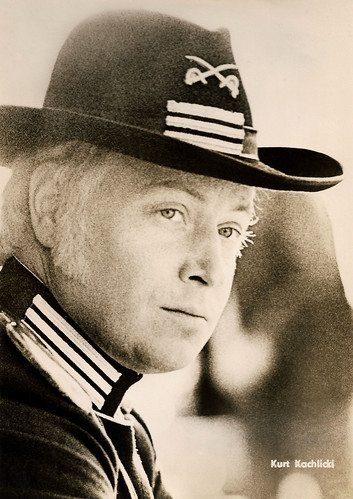
East-German postcard by VEB Progress Film-Vertrieb, Berlin, no. 5/71 D a. Photo: DEFA. Kati Bus and Karin Ugowski in Osceola (Konrad Petzold, 1971).

East-German postcard by VEB Progress Film-Vertrieb, Berlin, no. 5/71 D h. Photo: DEFA. Karin Ugowski in Osceola (Konrad Petzold, 1971).
The beginning of a seven-year war
Osceola (Konrad Petzold, 1971) is situated in Florida, 1830. Of all eastern Native American tribes, only the Seminoles have resisted being moved to reservations.
Having retreated to Florida, they live a simple horticultural life. But white plantation owners, angry at the increasing numbers of black slaves fleeing to Seminole protection, want to take their land.
Plantation owner Raynes (Horst Schulze), in particular, has convinced the military to wipe out the Seminoles. His rival Moore (Iurie Darie), a sawmill owner from the North who has a Seminole wife, is against slavery and considers it unprofitable.
Chief Osceola (Gojko Mitic) sees the coming danger. When a gunboat takes a large number of escaped slaves under fire, Osceola realises that he can no longer prevent the war and intervenes.
First, he frees his wife from the hands of Raynes, killing Hammer and setting fire to the mansion, then he uses a ruse to blow up the gunboat. In the end, the escaped slaves are able to flee on boats along with the Indians.
Moore, whose sawmill was destroyed by the gunboat, flees north as he no longer has a livelihood in Florida. For the Seminoles, this is the beginning of a seven-year war that will claim many more victims on both sides.

East-German postcard by VEB Progress Film-Vertrieb, Berlin. Photo: DEFA. Scene from Osceola (Konrad Petzold, 1971).
Interesting for its historical background
Osceola (1971), produced by the East German film studio DEFA, was primarily filmed in Cuba and Bulgaria by an East-German crew. The film script was written by Gunter Karl and Walter Puschel.
It was a screen adaptation of the novel 'Osceola: Leader of the Seminoles' by the English writer Thomas Mein Reed. However, the only overlapping elements bertween novel and film are a scene of negotiations between whites and Indians about relocation, during which Oceola plunges a knife into the treaty, and a fight between Indians, led by Oceola who did not agree to relocation, and Indians who did agree to relocation.
The film shows only a short period before the Second Seminole War begins, while the novel shows the fighting and a few years before the war (the story of Oceola destroying a US army ship is not in the novel). In the beginning of the novel, Oceola is a small-time planter with mixed white and Indian blood in his veins, he does not become a chief until the middle of the novel (in the movie he is only a chief).
Director Konrad Petzold had also directed the famous Yugoslav actor and "Honored Indian of the Soviet Union", Gojko Mitic' two previous 'Osterns' (communist Westerns), Weisse Wölfe/White Wolves (1969) and Tödlicher Irrtum/Fatal Error (1970). In 1973 the film was released in the USSR and was seen by 35.3 million people.
"A straightforwardly told Indian film" was the verdict of the Encyclopaedia of International Film.
At IMDb, somebody under the name of Unbroken Metal reviews: "Osceola is a bit slow sometimes, too much singing and talking in between the action sequences, but it is interesting for its historical background, rather different from the usual Prairie Indians. Somebody gets a credit for "scientific advice" in the titles to point out it was well researched..."

East-German postcard by VEB Progress Film-Vertrieb, Berlin, no. 79/71, 1971. Photo: Schwarz / DEFA. Horst Schulze in Osceola (Konrad Petzold, 1971).

East-German postcard by VEB Progress Film-Vertrieb, Berlin, no. 101/71, 1971. Photo: Schwarz / DEFA. Kurt Kachlicki in Osceola (Konrad Petzold, 1971).
Sources: DEFA-Stiftung (German), Wikipedia (German and Russian), and IMDb.
No comments:
Post a Comment